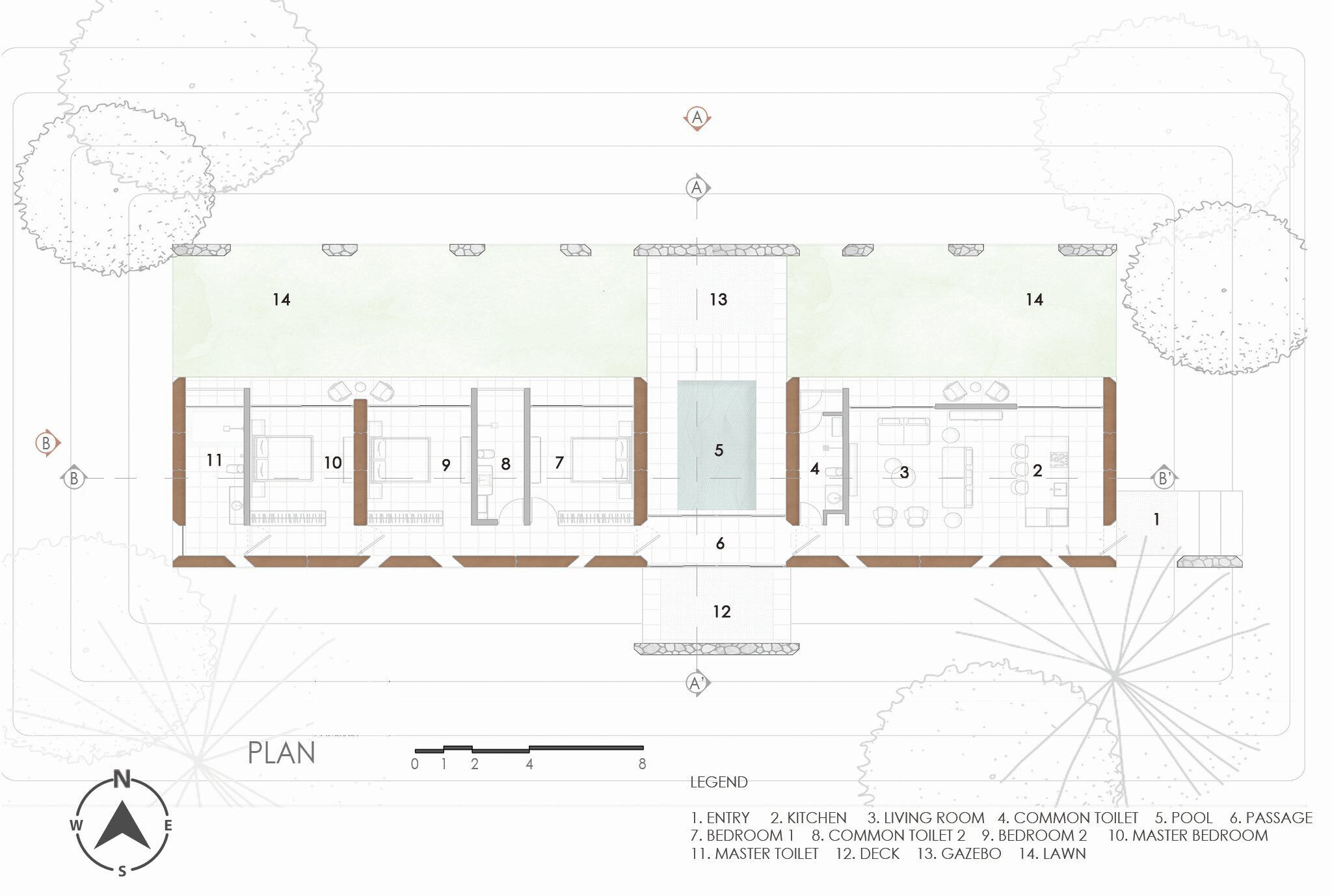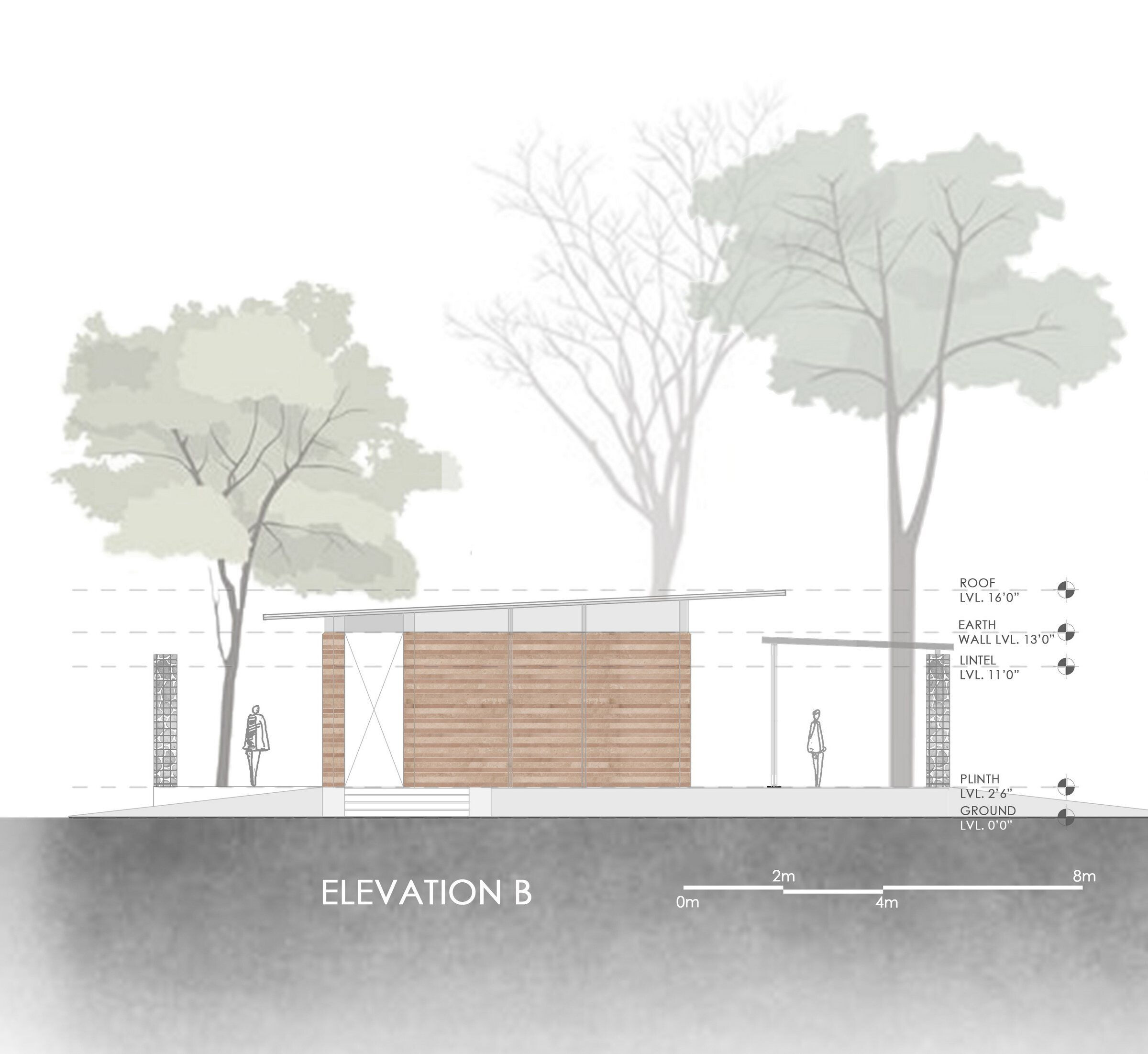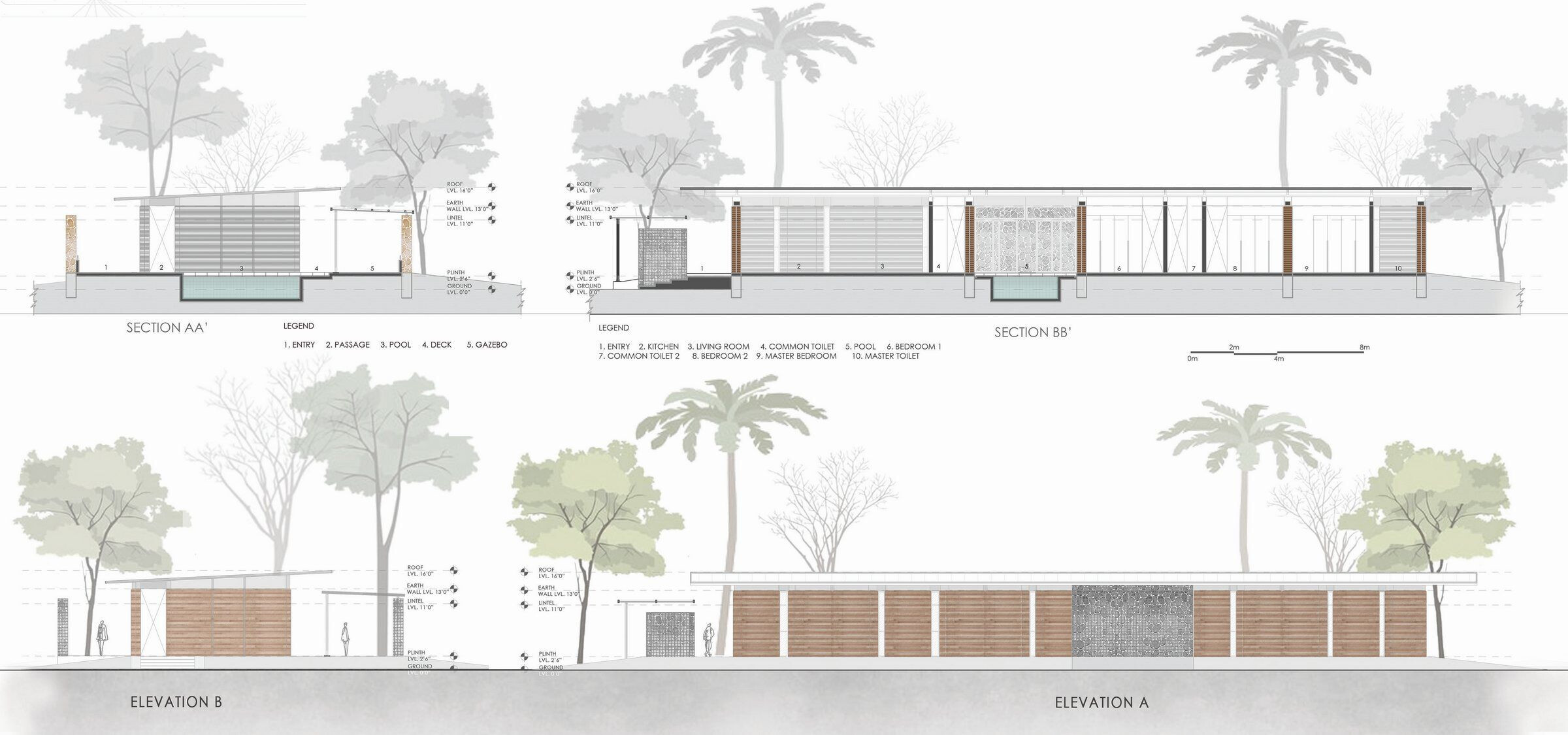BRIEF:
Ancestral but overshadowed by technologies that have emerged over time, the earth walls are a low-impact, sustainable and economical solution. Shielded with thick earth walls on the South and openings towards the north, this 3,000 sq. ft. layout is a simple one. Sculptural Gabions used as screens to provide privacy and Rammed earth used to reduce solar heat gain, the large linear blocks and the earth colors complement both landscape and built form. Being the needs of the day, a minimalist near net zero living, this is an effort to inspire people to readapt to sustainable living.

STORY BEHIND THE EARTH HOUSE
Being the need of the day, a minimalist near net zero living, this is an effort to inspire people to readapt to sustainable living practices influenced from the past….
Essence: _ The Earth house demonstrates the built environment’s opportunities for addressing the global climate crisis. We have taken a conscientious decision to weave in nature through its effort to construct a net positive home comprised of Rammed Earth along with other natural materials excavated from site.
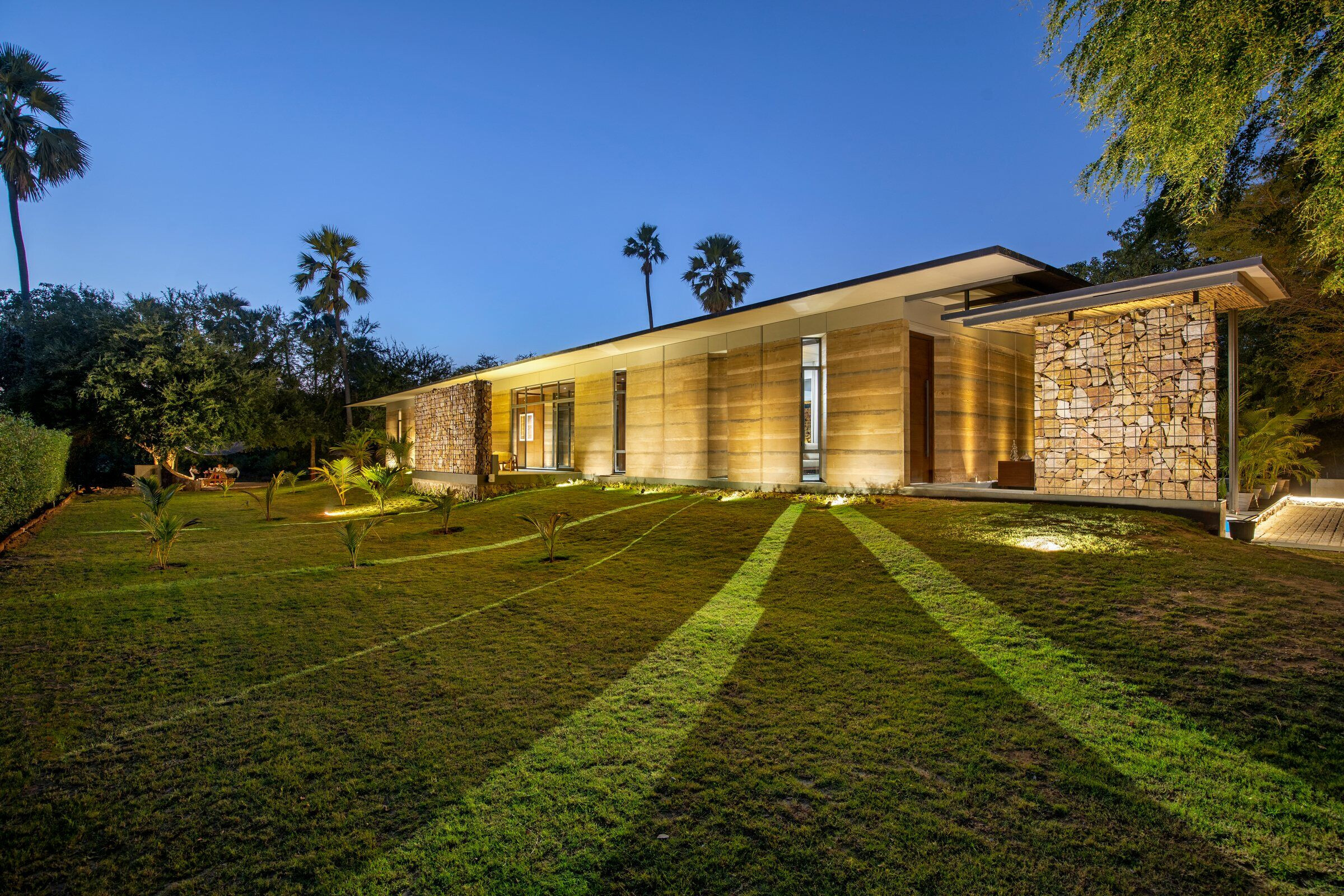
Location: _ Located amidst expansive farmlands, the Earth house aims to blend seamlessly among its habitat and natural environment. The 3000 square foot construction has a building skin, thick with Earth walls that reduce solar heat gain and maintain a temperature 7 to 10 degrees cooler than the outside in the Tropical climate of Gujarat.
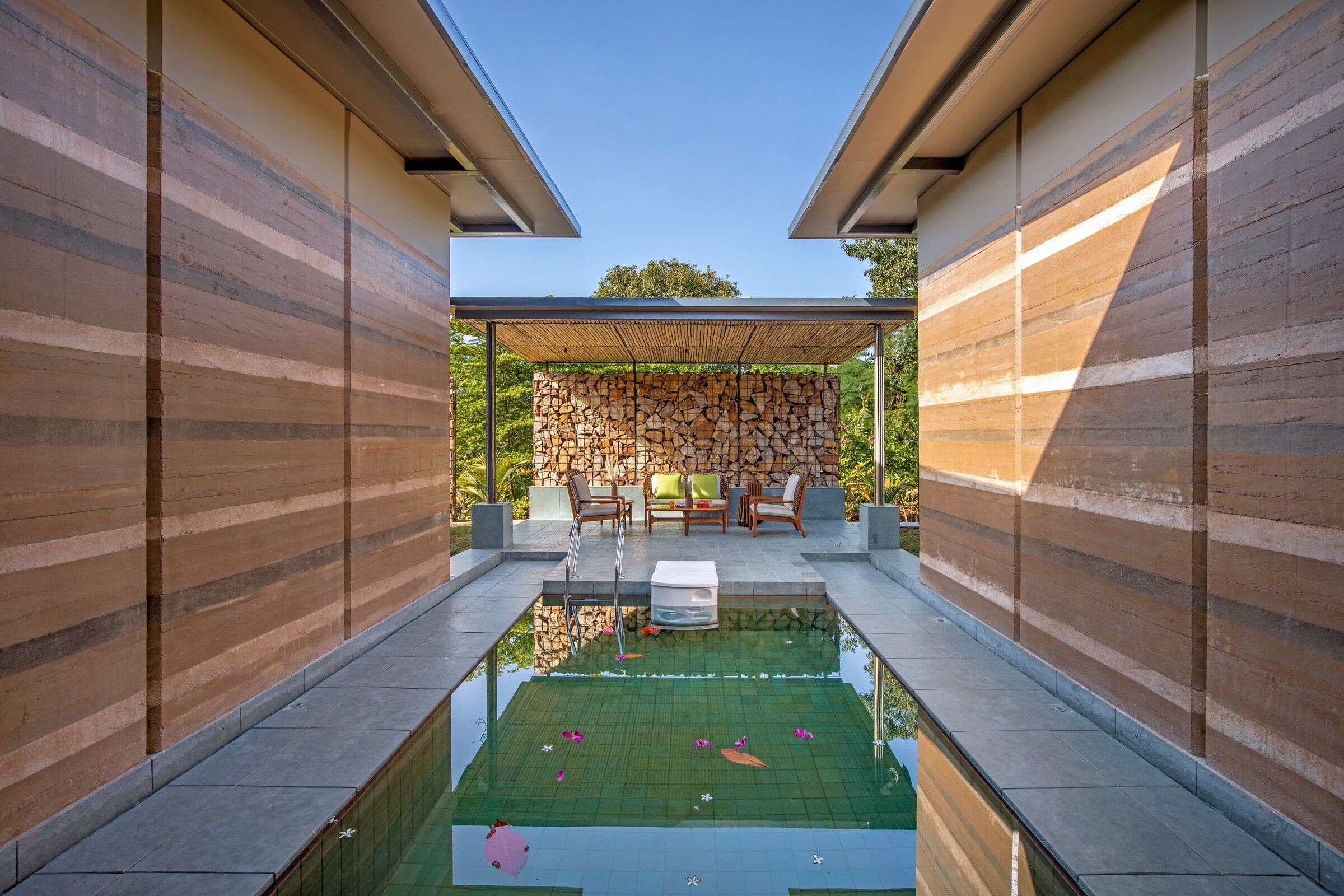
Layout: _ The layout is a simple one of three bedrooms and living space separated on either side with the leisure space of a pool and a Gazebo. The building size is optimum and leaves a minimal footprint on the site area. The sustainable country house also has an inclined roof targeted at capturing maximum solar energy to replenish and produce electricity for the space.

Energy: _ Along with being an active Sustainable design, the Earth House also adopts passive sustainable strategies such as considering sun orientation and siting the house to face North for optimum day light and natural ventilation that reduces energy requirements for the house in the long run.
Landscape: _ Landscaping choices were native to the area, carefully selecting plants local to the place, that inevitably reduces irrigation needs, adding to the passive energy strategy.

This net zero home also surrounds itself with Miyawaki forest, Organic farm and Mango orchard with an impressive foliage that shades the roof, reducing solar heat gain inside the building. The Earth house produces its own food, electricity and harvested water from the abundant rainfall.
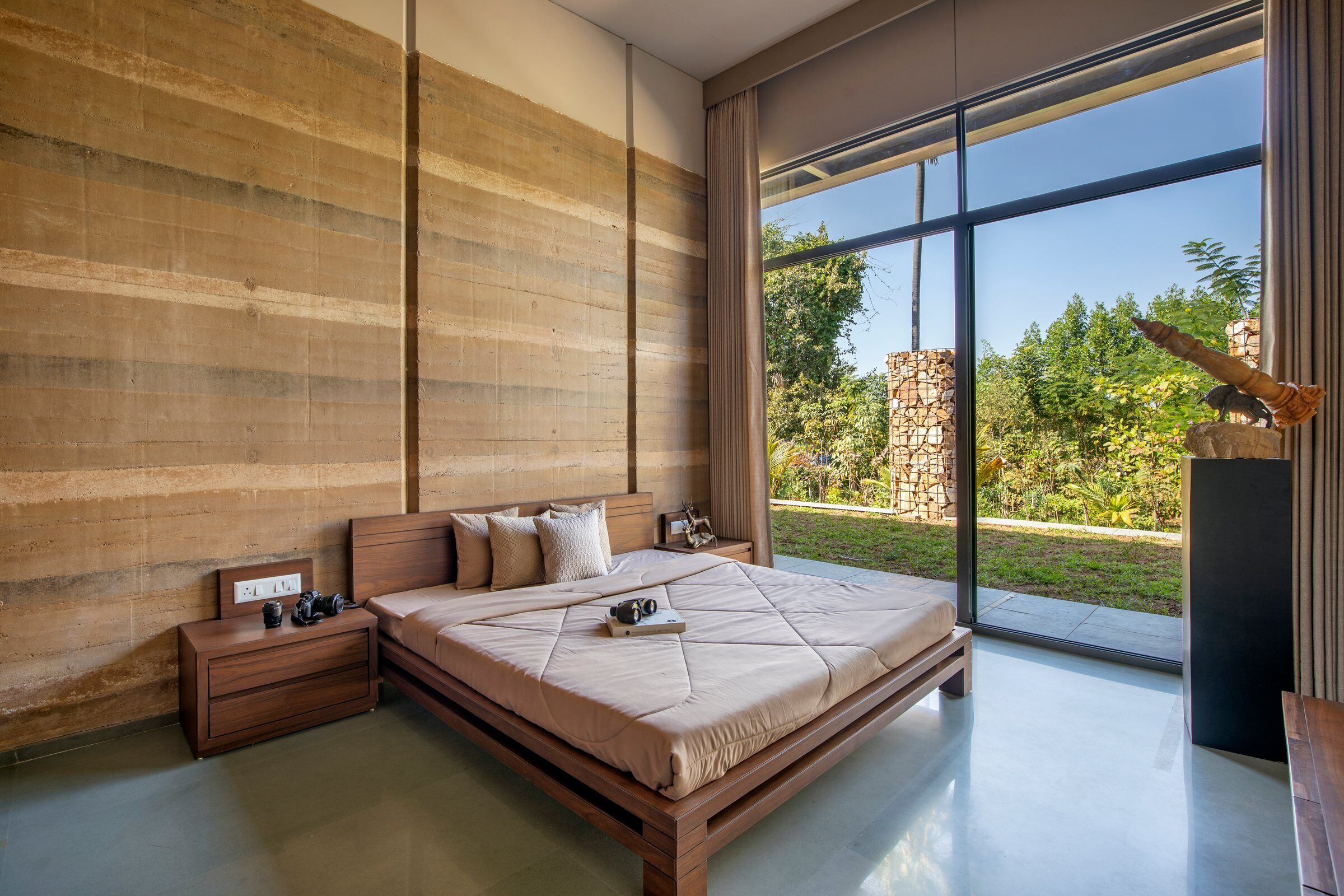
Materiality: _ To up the ante on sustainability, we made sure to purchase all materials for furniture and finishes from companies that use environmentally responsible manufacturing techniques and recycled materials. Rocks in Gabion walls are local rocks readily available that are used to secure the house providing it sufficient privacy as well as be a sculpture in itself.
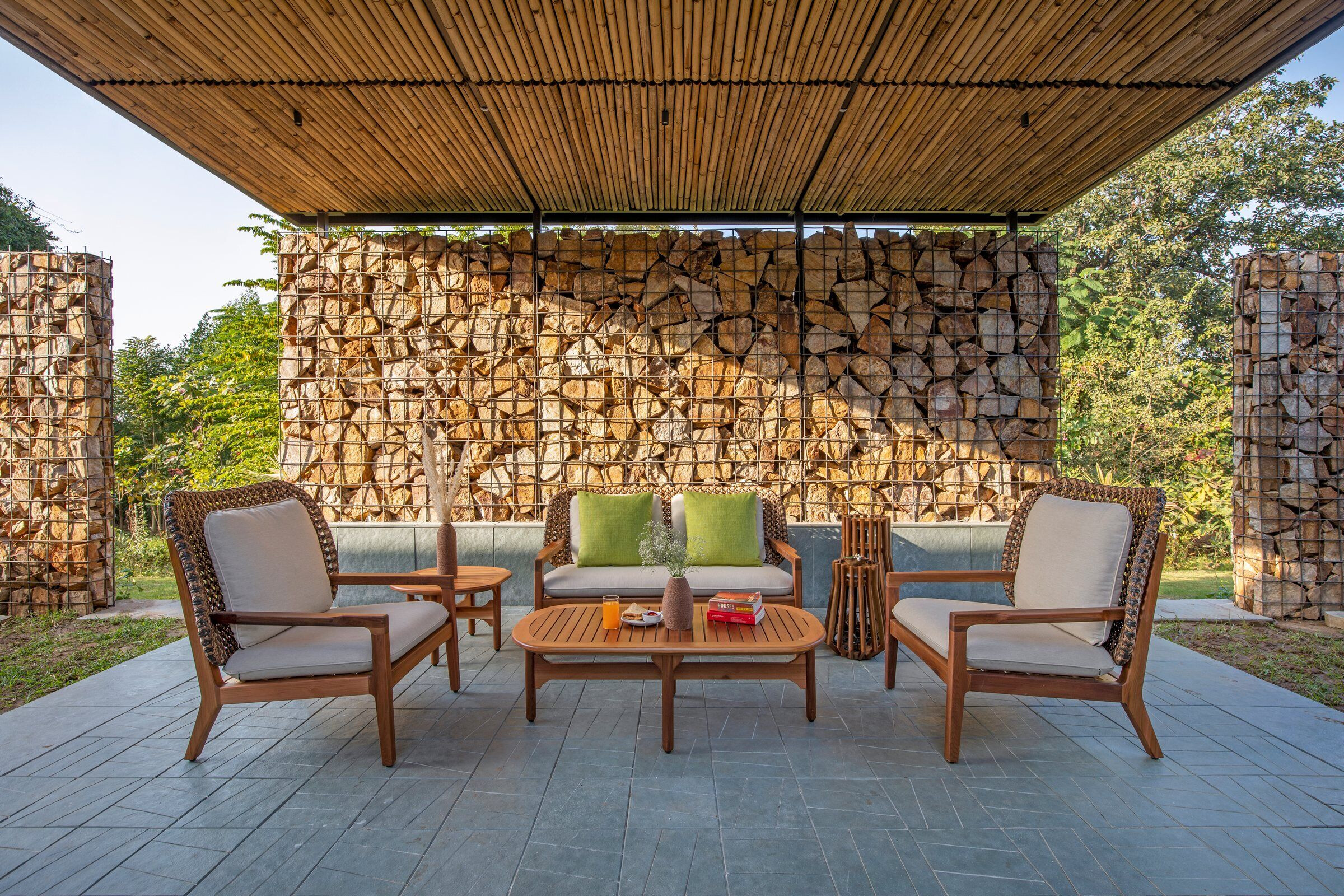
Sustainability: _ As climate change takes effect, it becomes more and more vital to concert our efforts toward minimizing our carbon footprint and promote the greening of our cities. A conscious effort to not only balance form with function, but to most importantly be environmentally responsible and sustainable was the crux of this design.
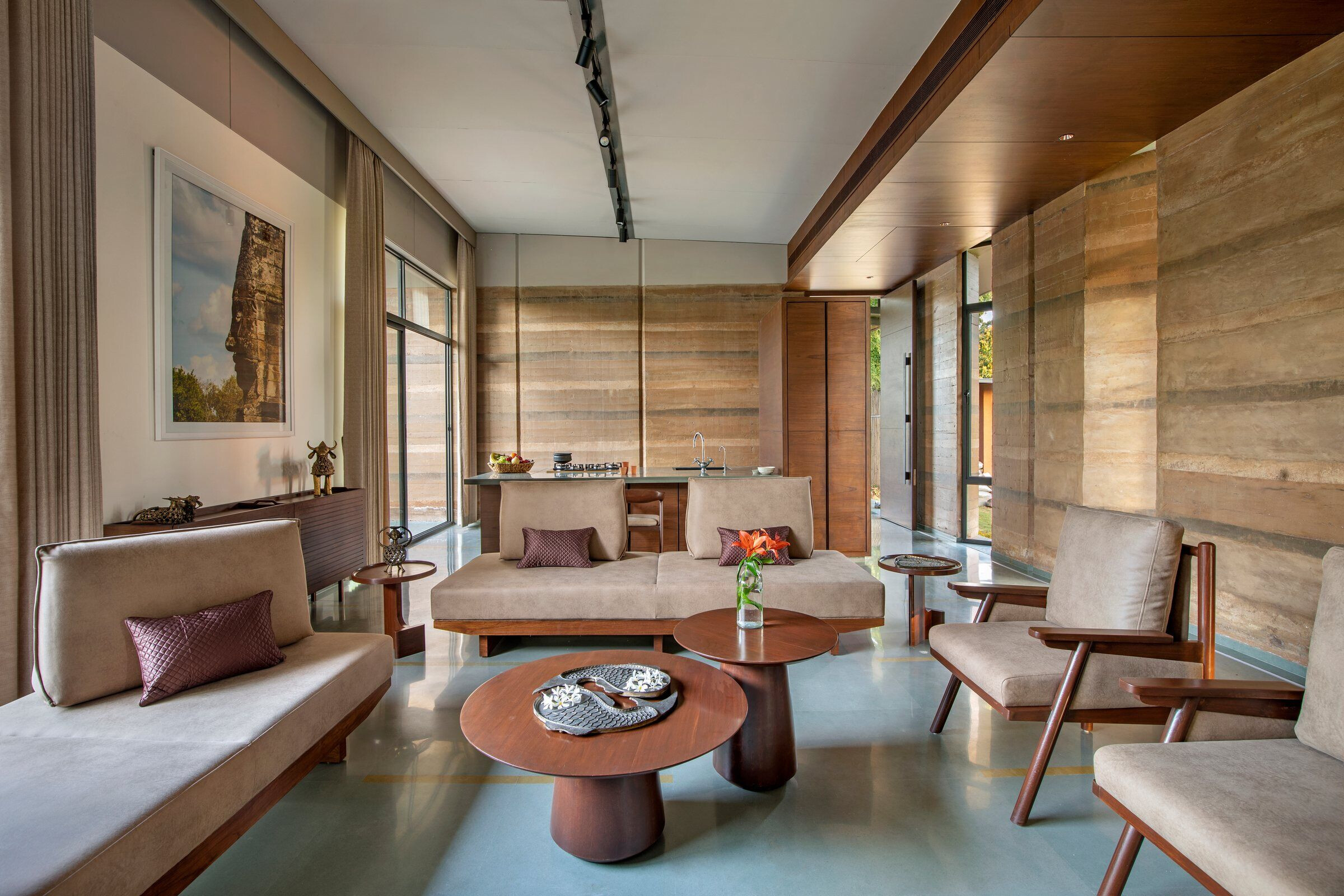
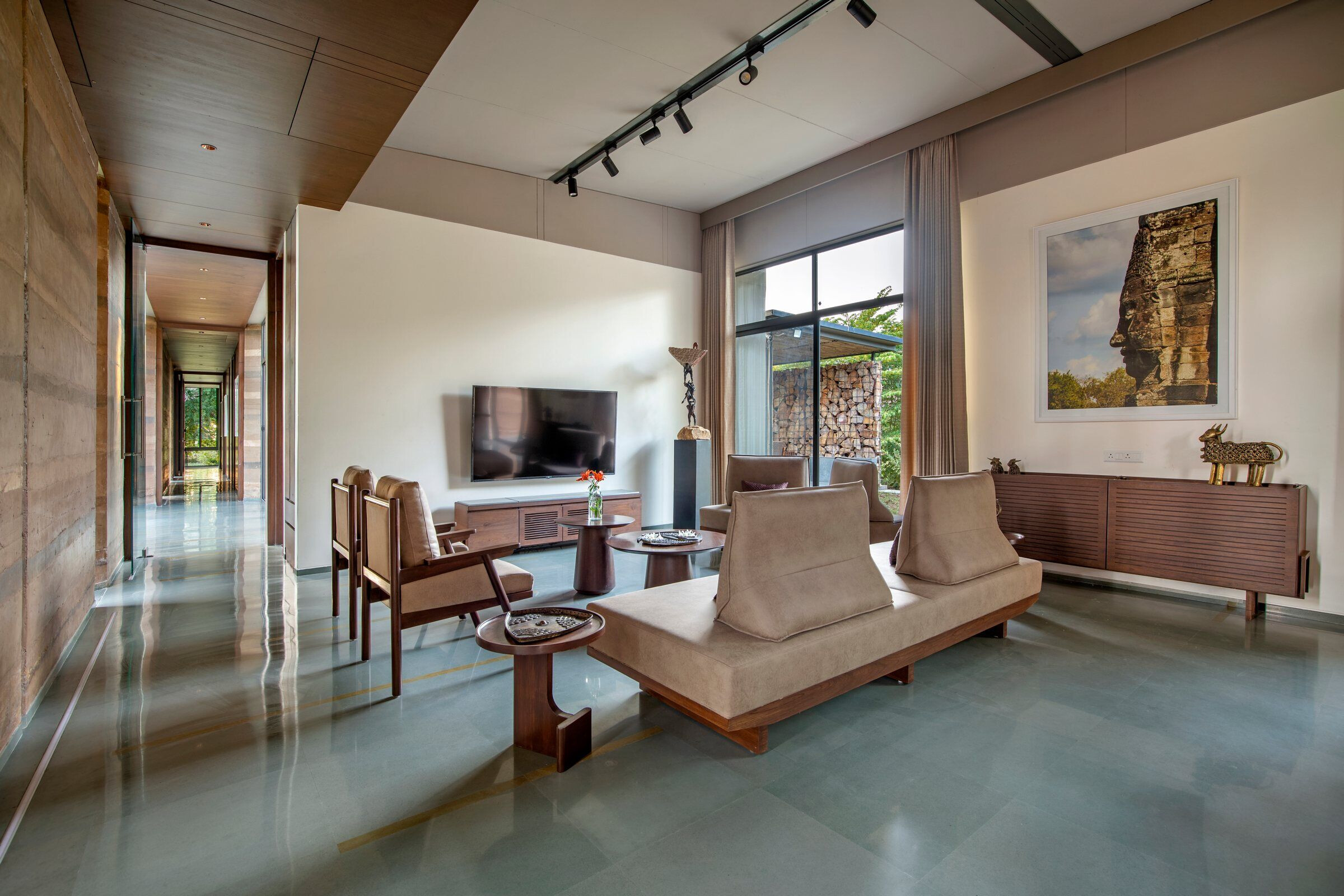
Team:
Archy Bhatt, Priya Goyal, Harmony Planning Services
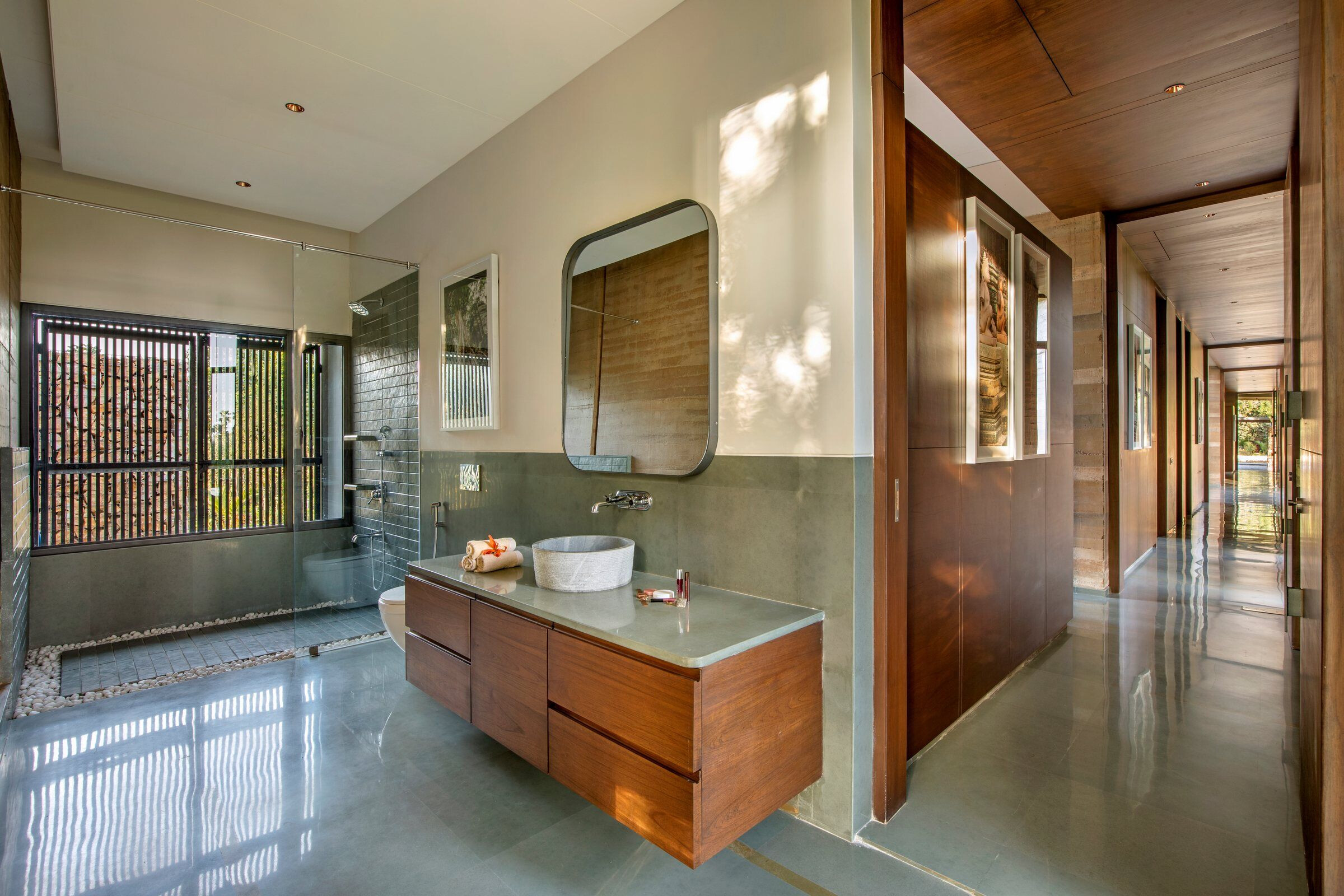

Material Used:
1. Facade cladding: Raw Earth, Natural Stones, Paint
2. Flooring: Kota Stone (Green and Yellow)
3. Doors: Wooden Doors with MS formwork
4. Windows: Aluminum System windows
5. Roofing: Puff Panels
6. Interior lighting: Nirvana Lighting solutions
7. Interior furniture: Customised

